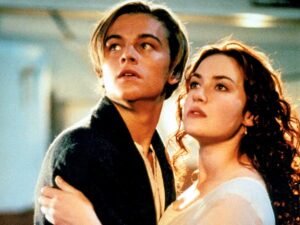Romance novels, a beloved genre for many readers, come in various styles and settings. Two popular subgenres are historical romance and contemporary romance. Each offers distinct experiences and appeals to different tastes, often reflecting the time period or societal context in which the stories are set. Understanding the key differences between historical romance and contemporary romance can enhance your reading experience and help you choose which type resonates with you. Let’s explore the defining characteristics of each and see how they compare.
Historical Romance: A Journey Through Time
Setting and Context:
Historical romance novels are set in specific historical periods, ranging from medieval times to the early 20th century. These stories often focus on the social norms, customs, and issues of their respective eras. The historical context plays a significant role in shaping the characters’ experiences and the romance that unfolds.
Themes and Characteristics:
- Historical Accuracy: These novels strive to depict the era authentically, including details about clothing, manners, and societal structures. Authors often conduct extensive research to ensure accuracy.
- Traditional Social Norms: Historical romances frequently reflect the social constraints and expectations of the time. This might include arranged marriages, class distinctions, and gender roles, which can add tension and drama to the love story.

- Regency and Victorian Eras: A significant portion of historical romance novels are set in the Regency and Victorian periods. This focus is due to the enduring fascination with the elegance and social intricacies of these times.
Popular Examples:
- “Pride and Prejudice” by Jane Austen is a classic historical romance set in the Regency era, exploring themes of social class and romantic misunderstanding.
- “Outlander” by Diana Gabaldon blends historical romance with time travel, following Claire Randall as she navigates love and conflict in 18th-century Scotland.
Contemporary Romance: Modern-Day Love Stories
Setting and Context:
Contemporary romance novels are set in the present day, reflecting modern life and societal norms. These stories often take place in current settings, such as bustling cities, quaint towns, or everyday workplaces. The modern context allows for a portrayal of current issues and relationships.
Themes and Characteristics:
- Modern Issues and Trends: Contemporary romances often address current social issues, such as career aspirations, digital communication, and contemporary relationship dynamics. They reflect the fast-paced and evolving nature of today’s world.
- Realistic Relationships: These novels typically focus on realistic portrayals of romance and relationships. Characters might deal with modern challenges like online dating, balancing work and love, or navigating diverse family structures.
- Variety of Settings: Contemporary romances can be set in any modern environment, from urban landscapes to rural communities, offering a wide range of backdrops for the love story.
Popular Examples:
- “The Kiss Quotient” by Helen Hoang features a contemporary romance with a unique twist, exploring themes of love and self-discovery in the modern dating world.
- “Me Before You” by Jojo Moyes is a contemporary romance that addresses themes of disability and personal growth, set in a modern-day context.
Key Differences:
1. Time Period and Setting:
- Historical Romance: Set in past centuries, with detailed attention to historical accuracy.
- Contemporary Romance: Set in the present day, reflecting modern life and current societal norms.
2. Social Norms and Constraints:
- Historical Romance: Explores the constraints and traditions of the era, adding complexity to the romance.
- Contemporary Romance: Focuses on current social dynamics and personal challenges, often with more freedom in romantic relationships.
3. Themes and Issues:
- Historical Romance: Deals with historical issues, class distinctions, and traditional customs.
- Contemporary Romance: Addresses modern-day concerns, such as career pressures, digital relationships, and diverse lifestyles.
Conclusion
Both historical romance and contemporary romance offer unique experiences for readers. Historical romance transports readers to bygone eras with richly detailed settings and traditional social dynamics. In contrast, contemporary romance provides a lens into modern-day relationships, reflecting current trends and issues. Whether you’re drawn to the charm of the past or the immediacy of the present, both genres offer compelling love stories that captivate and entertain.
Understanding the differences between historical and contemporary romance can help you select the novels that best match your interests and reading preferences. Each genre has its own strengths and appeals, contributing to the rich and diverse world of romance literature.

